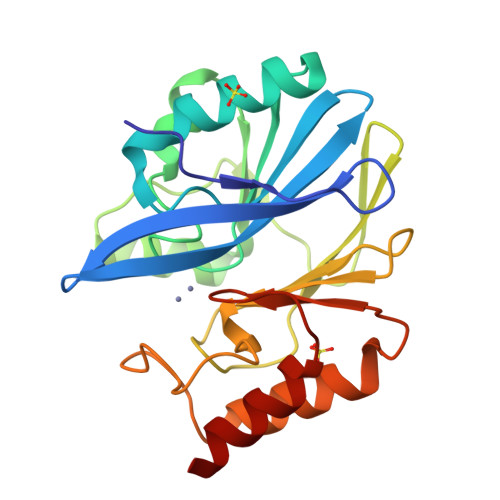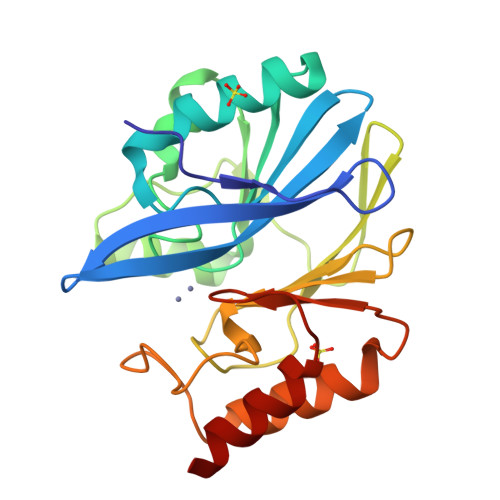Structure of metallo-beta-lactamase IND-7 from a Chryseobacterium indologenes clinical isolate at 1.65-A resolution
Yamaguchi, Y., Takashio, N., Wachino, J.-I., Yamagata, Y., Arakawa, Y., Matsuda, K., Kurosaki, H.(2010) J Biochem 147: 905-915
- PubMed: 20305272
- DOI: https://doi.org/10.1093/jb/mvq029
- Primary Citation of Related Structures:
3L6N - PubMed Abstract:
The X-ray crystal structure of metallo-beta-lactamase from Chryseobacterium indologenes IND-7 was determined at a resolution of 1.65 A. The overall structure adopted a four-layered alphabeta/betaalpha sandwich structure with a dinuclear zinc(II) active site, in which the zinc(II) ions were denoted as Zn1 and Zn2. The overall structure of IND-7 is analogous to those of subclass B1 metallo-beta-lactamases, as determined by X-ray crystallography. A significant structural difference, however, was observed in the dinuclear zinc(II) active site: the coordination geometry around Zn1 changed from tetrahedral, found in other subclass B1 metallo-beta-lactamases, to distorted trigonal bipyramidal, whereas that of Zn2 changed from trigonal bipyramidal to tetrahedral. Arg121(101), which is located in the vicinity of the dinuclear zinc(II) active site, may affect the binding affinity of Zn2 due to an electronic repulsion between the zinc(II) ion(s) and a positively charged guanidyl group of Arg121(101). Moreover, the hydrogen-bonding interaction of Arg121 with Ser71(53), which is conserved in IND-1, IND-3 and IND-5-IND-7, appeared to have important consequences for the binding affinity of Zn2 in conjunction with the above electrostatic effect.
Organizational Affiliation:
Environmental Safety Center, Kumamoto University, 39-1 Kurokami 2-Chome, Kumamoto 860-8555, Japan. yyamagu@gpo.kumamoto-u.ac.jp


















